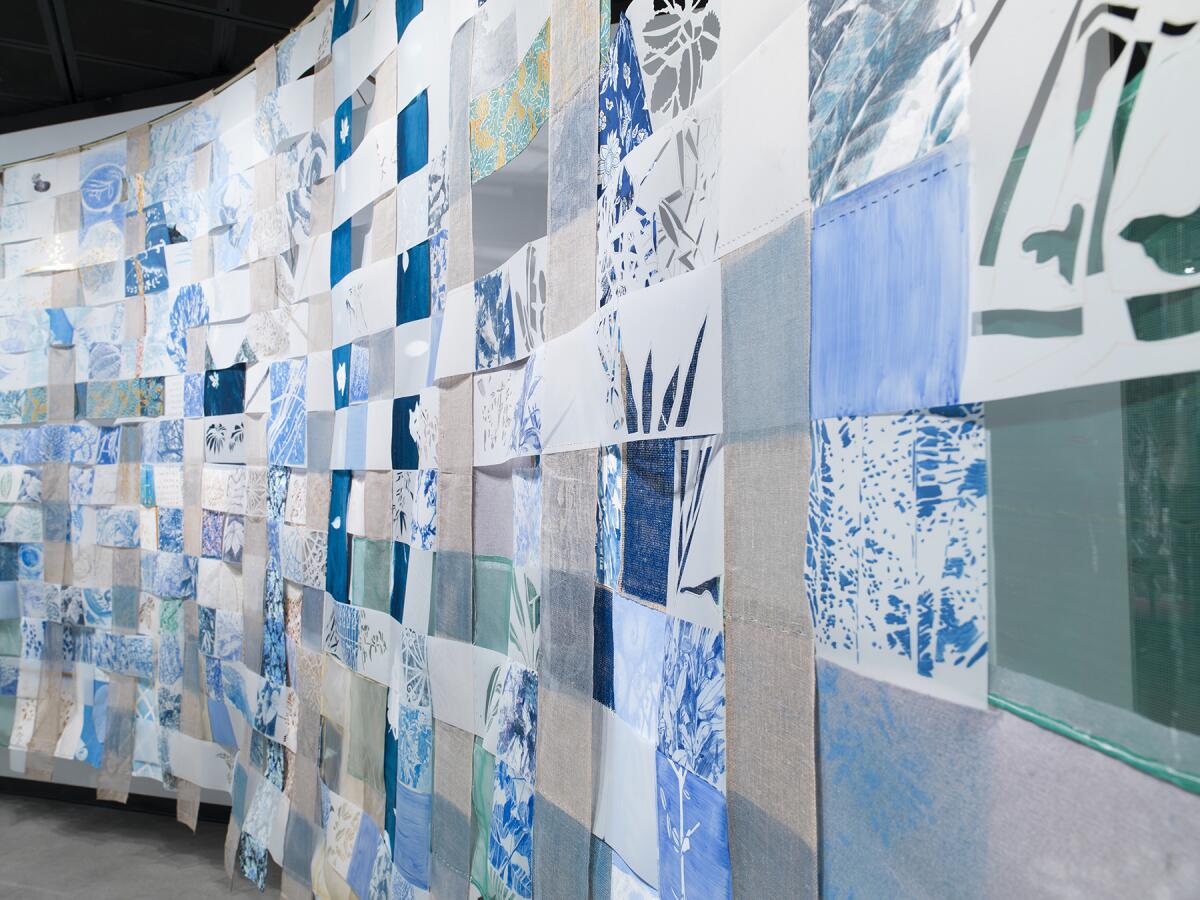Review: Pacific Standard Time exhibition at the Fowler traces the power of sacred plants in Brazil
The Fowler at UCLA has rolled out "Lineage Through Landscape: Tracing Egun in Brazil by Fran Siegel" — one of the early offerings for Pacific Standard Time: LA/LA, the Getty-led series of exhibitions and events exploring Latino and Latin American art.
Inspired by a cloth, bead, shell and mirror ensemble in the Fowler collection, Siegel's installation has only a satisfying gloss of relevance. Situating her work among the Fowler’s objects of exquisite formal integrity and deep cultural significance makes the weaknesses of this new installation more glaring. Here the journey, not the destination, must spur the imagination.
The L.A.-based Siegel traveled to Brazil on a Fulbright Fellowship to study Candomblé, a religion derived from the beliefs and practices of the Yoruba peoples of West Africa. Yoruba who had been enslaved by the Portuguese and brought to Brazil to harvest sugar and to mine gold adapted traditional rituals, including the worship of ancestral spirits, called Egun. (The clothing ensemble at the Fowler that first intrigued Siegel was worn during such ceremonies.) Siegel conducted further studies on the island of Itaparica, where two Candomblé congregations remain and continue to grow plants attributed with sacred, protective properties.


SIGN UP for the free Essential Arts & Culture newsletter »
Sprigs of such plants rendered in unglazed porcelain are mounted in a wide band across one wall of the Fowler gallery. Siegel sculpted the specimens with sketch-like informality, rather than botanical precision.
Spanning the adjacent space is a 35-foot-wide suspended weaving made from strips of fabric and paper that Siegel has drawn and painted on, cut into and stitched. The milky translucency of drafting film layers with cyanotype photograms on cloth. Maps with islands excised alternate with drawings of ornamental ironwork patterns. Impressions neighbor traces. Throughout, representations of foliage dominate.
As with the porcelain leaves, the images in the woven installation occupy a middle ground between detailed specificity and generalized memory. Siegel's format is promising: The piece's voids and irregular edges make literal the provisionality of her records, and the weave itself speaks acutely of the layering of time, culture and belief central to her subject. There is much texture here, to the touch, but not as much visual richness or density as the material merits.
Fowler Museum at UCLA, 308 Charles E. Young Drive North. Through Dec. 10; closed Mondays and Tuesdays. (310) 825-4361, www.fowler.ucla.edu
Support coverage of the arts. Share this article.
MORE ART:
Composer John Luther Adams' new campus 'Wind Garden' art installation
Free museum admission day for Pacific Standard Time: LA/LA
Where the chisel hits the marble: Zarouhie Abdalian seeks the moment nature becomes art
The biggest entertainment stories
Get our big stories about Hollywood, film, television, music, arts, culture and more right in your inbox as soon as they publish.
You may occasionally receive promotional content from the Los Angeles Times.



